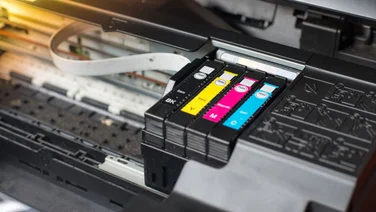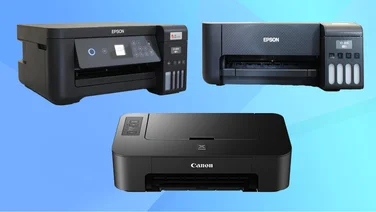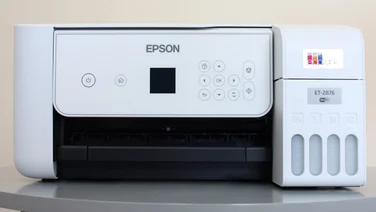To help us provide you with free impartial advice, we may earn a commission if you buy through links on our site. Learn more




The G Micro system has been something of a success for Panasonic and the Lumix DMC-G2 looks to build upon that with a number of improvements over previous models. This and its cheaper brother, the DMC-G10, are designed to replace the G1 and lead a two pronged attack against the competition. While the G10 surpasses the G1’s specification in a few areas but loses out in many others, the G2 surpasses its predecessor in almost every respect. Its upgrades are evolutionary rather than revolutionary, though.
The headline upgrade is the new movie mode, which supports 720p recording at 30fps in the AVCHD Lite or M-JPEG formats. It supports mono sound with the option of attaching a stereo microphone. Video quality is very good for a camera of this size and the AVCHD Lite format is very efficient. The other big news is the new fully articulated 3in 460,000 dot touch-screen display, which hasn’t come at the expense of the more traditional button controls. Panasonic has spent time improving the G2’s handling by refining an already sophisticated but simple control system.

The control dial has been moved to the rear, while the iA mode has also been moved from the mode dial to its own dedicated button on top next to the shutter release – it’s accompanied by a new direct movie record button, too. The Q.Menu button has also been moved and now sits above the four-way controller, giving you access to most of the camera’s settings with the touch of a button. To the left of the electronic viewfinder, the controls have also become more advanced with focus point selection added to the dial while focus drive mode has been transferred to a switch encircling the dial’s base.
Panasonic’s decision to add a touch-screen interface is a curious one, but means the G2 is the first touch-screen interchangeable lens camera. Headline functions include touch focus, where the user can select a focus point by touching the screen, and touch shutter, which takes that one step further by releasing the shutter. Some functions are quicker to activate using the touch-screen, but frankly it feels like a bit of a gimmick.

Another disappointing change is the relocation of the SD card slot, which has incidentally been upgraded to support the new SDXC standard. The slot is now located in the battery compartment on the bottom, instead of in its own hatch on the side of the body, making it difficult to change cards if you’re using a tripod.
The G2’s 4/3in sensor remains largely the same as its predecessor’s, packing the same 12.1 megapixels, but its maximum sensitivity has been expanded to ISO 6400 thanks to the new Venus Engine HD II image processor which was also included in the G10. It also includes Intelligent Resolution technology, which is claimed to make soft gradations smoother as well as emphasise edges and detailed textures in the camera’s Intelligent Auto mode.
Performance remains one of the G2’s strong points, although its 2.5 fps burst rate is slightly slower than the G1’s. One key difference though is that the G2’s Live View isn’t disabled at this speed, which makes it easier to track moving subjects. The G2 starts up and can take a picture in under half a second, while shot-to-shot time is 0.8 seconds in single shot mode, which is comparable to entry-level DSLRs.
The G2’s auto-focus system still uses contrast detection like the G1, and is surprisingly quick in most lighting conditions. It does tend to search a little in the dark, but it’s helped by the AF assist lamp for subjects up to four metres away.

Given that the sensor technology hasn’t changed, it’s no surprise to see that image quality hasn’t dramatically improved compared to the G1. There’s a little less noise at ISO 1600 but it’s not a massive improvement and, in general, noise is well controlled up to ISO 800. At ISO 1600, tonal gradations do start to take a turn for the worse with visible chroma noise present where the image processor attempts to keep things under control – at ISO 3200, you’ll find the images are only usable if you’re using them online or for small prints and ISO 6400 is most definitely unusable.
Where things have improved compared to the G1 is in the kit lens. The new 14-42mm f/3.5 -5.6 lens is much sharper corner-to-corner and exhibits much less distortion than the G1’s 14-45mm kit lens. Chromatic aberration is also excellently controlled. The camera’s image stabilisation mode has been tweaked since the G1, but it exhibits the same problems that we documented in our G10 review – very rarely increasing sensitivity beyond ISO 400, even when it’s obviously required.

Overall, however, the G2’s upgrades are mostly for the better and if you’ve got your heart set on a Panasonic G Micro camera, then the G2’s large, high-resolution viewfinder alone is enough to justify this model over the G10. Currently, Panasonic has a cash back offer on, meaning you’ll end up only paying £519 for the G2.
Where the G2 starts to come a cropper is when you compare it to similarly priced digital SLRs. In both RAW and JPEG modes, we found that images from the Nikon D5000, Canon EOS 500D, and more recently the EOS 550D, exhibited much less noise and colour reproduction seemed altogether more sophisticated. Of course, they’re not as compact as the G2, but the differential isn’t as big as you’d think, with none of these models being exactly pocketable.
If compactness is more of a concern and you’re prepared to make a few sacrifices on the handling front, it might be worth looking at Sony’s Alpha NEX-5, which we’ll be publishing our review of very soon.






